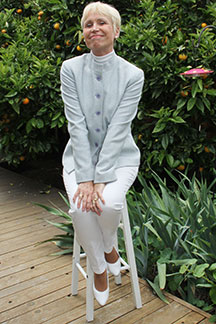Don’t forget to polish your shoe today. When I was a child I was so keyed up that I could barely sleep during the night of December 5 to December 6. Why? Because I was awaiting St. Nikolaus (St. Nick). By then, I had completed my tasks: I had buffed my boot until it glistened in the soft ceiling light and placed it beside the bedroom door. (Just one boot – I didn’t want to appear greedy.) I also had carefully penned my wish list and tugged it into the empty boot for St. Nikolaus to pass along to the Weihnachtsmann (Father Christmas). Sometime during the night, when I was asleep, St. Nick would come, take the wish list and fill the boot.
In the morning of December 6, I found out whether St. Nikolaus had left small treats in my boot – chocolate, fruit, nuts, tiny toys – or whether he had left me a switch. He left treats for good little girls and switches for naughty ones. The big question always, “How much did St. Nick know?”
Legend Surrounding St. Nikolaus
St. Nikolaus lived in the 4th century in Myra, today’s Turkey, and performed many miracles. He was a pious priest who cared for the poor and was known for his kindness and generosity. Worship of St. Nikolaus began in the Greek church in the 6th century. Two hundred years later, it spread to central and southern Europe.
St. Nikolaus is not Santa Claus
Though they often wear similar garments, St. Nikolaus is not Santa Claus. The latter is called Weihnachtsmann (Father Christmas) in Germany. When Martin Luther, the Protestant Reformer, http://www.walled-in-berlin.com/j-elke-ertle/a-man-called-martin-luther/ wanted to reduce the importance of both – St. Nikolaus and the Weihachtsmann as gift bringers – he replaced them with the Christkindl (Christ Child). The custom of the Christkindl bringing the gifts is more rooted in the Catholic south of Germany than in the north. To this day, you will find gift bringers with many different names across the German-speaking region of Europe. But despite their different names, they all resemble more or less the same folkloric characters.
Does Nikolaus come again on Christmas Eve?
No, it is the Weihnachtsmann (Santa Claus) who comes on Christmas Eve, and he comes in the afternoon, not the evening. German children do not have to wait until Christmas morning to open and play with their gifts. In many families, Santa comes in person, asks the child to recite a poem and then bestows his gifts.
(I still check my boot every December 6 morn. Although poor old St. Nick did manage to misplace my address a couple of times over the years, his memory is still pretty good.)
For a sneak peek at the first 20+ pages of my memoir, Walled-In: A West Berlin Girl’s Journey to Freedom, click “Download a free excerpt” on my home page and feel free to follow my blog about anything German: historic and current events, people, places and food.
Walled-In is my story of growing up in Berlin during the Cold War. Juxtaposing the events that engulfed Berlin during the Berlin Blockade, the Berlin Airlift, the Berlin Wall and Kennedy’s Berlin visit with the struggle against my equally insurmountable parental walls, Walled-In is about freedom vs. conformity, conflict vs. harmony, domination vs. submission, loyalty vs. betrayal.


















